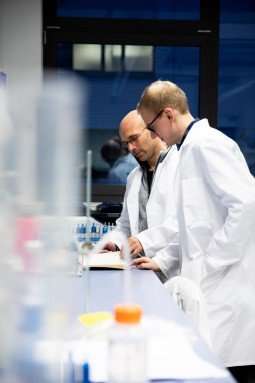The virtual cancer patient

No two cancers are the same. Each type of leukaemia has its peculiarities, every tumour patient a unique disease. Why? Cancer cells are degenerate cells whose growth is out of control as the result of various genetic changes. These mutations vary even amongst patients with the same kind of cancer. And even cells within a tumour can vary genetically. These genetic changes not only influence the growth of the diseased cells, but also the way they respond to treatment. "Traditional treatments are often about making adjustments that won't work for a particular patient," says Heinz Koeppl, Professor of Electrical Engineering and co-member of the Department of Biology.
Currently only one in four cancer treatments is successful, yet all the patients suffer from the side effects. The vision shared by Koeppl and his colleagues: in future, it should be possible to determine whether a particular treatment will be able to help the patient. To this end, the scientists are developing computer models, effectively virtual patients, using the genetic and protein data of cancer cells, the results of laboratory cell trials, histological findings, other clinical investigations, and a wide range of additional information. The research work by the team at Darmstadt is incorporated in two EU projects: the international joint project PrECISE, which is now ending, focused on prostate cancer. The iPC project which addresses the most frequent childhood cancers is due to start in February 2019.
For some types of cancer there are already various basic network models and databases that describe cell processes such as signaling cascades and catalytic protein activities. The researchers refine these skeleton networks by integrating current disease- and patient-specific information. The crux lies in finding algorithms that correctly adapt the existing knowledge to the new molecular data, explains Professor Koeppl. It is extremely important to incorporate the detailed knowledge in the heads of biologists and biochemists into the models: "Purely data-driven AI approaches are not appropriate here."
The virtual patient depicts the network of molecular interactions in cancer cells. If the researchers want to test a medication that inhibits a specific protein, all they have to do is reduce or switch off this protein's activity in their computer model. They can then see the effects on the entire network, and thus also on the cancer cells. Is the desired signaling pathway deactivated? Are the cells now reproducing more slowly? Or even dying? Or is the effect negligible? "If you apply various active compounds to the network model, then you can suggest the best available treatment to the patient. That's the idea behind personalised medicine," says Koeppl.
Immunotherapy and other new treatment methods can also be tested on these models. In the PrECISE project, the effects of various anti-cancer compounds have already been estimated on a computer. "Current results correlate well with data from cancer cell lines," says Koeppl. Which gives us reason to hope, even if it will be years before we get to clinical application.


















